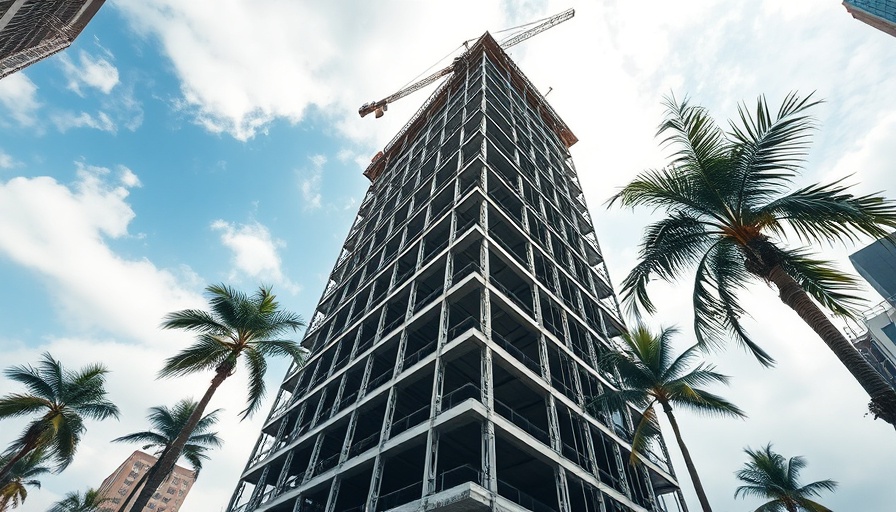
Building a Sustainable Future: The Residences at 1428 Brickell
Miami, known for its lively culture and booming construction projects, welcomes an eco-friendly architectural marvel—the Residences at 1428 Brickell. Designed by ACPV Architects, this towering skyscraper is the first of its kind to feature a 'solar backbone' with 500 photovoltaic-integrated windows.
What Makes This Skyscraper Unique?
The innovative design of the Residences at 1428 Brickell supports a significant move towards sustainable living. As the world increasingly looks for ways to counter climate change through architecture, this building leads with its integration of green technology. The solar glass technology allows the building to generate around 175,000 kWh of clean energy annually, which will power various amenities in the tower, including fitness centers and a rooftop deck.
The Aesthetic Touch of Functionality
While functionality is a core focus, aesthetics also play a crucial role in this project. The design features an organic, curvilinear shape, lending a sense of fluidity and grace to the skyline. ACPV Architects emphasize artistic harmony through their choice of materials, which includes soft curves devoid of sharp angles, aligning with ergonomic standards for both environmental and human comfort.
Creating Comfortable Workspaces.
For digital nomads and individuals seeking remote workspaces, the design principles of the Residences at 1428 Brickell offer invaluable insights. Ergonomic considerations include open spaces and natural lighting, encouraging a productive work environment. The design reinforces the importance of feel-good aspects such as aesthetic interiors and structural harmony that resonate with comfort, wellness, and functionality.
The Rise of Sustainability in Urban Development
The rise of the solar-integrated skyscraper reflects a growing trend towards embedding sustainability within urban development. This model not only showcases energy efficiency but also highlights community-oriented amenities. The blend of contemporary living and ecological responsibility showcases how cities can evolve in a sustainable direction while offering luxury benefits to residents.
Future Predictions: The Impact of Photovoltaic Structures
As urban areas seek to adopt more environmentally conscious methods of building, we predict that designs like the Residences at 1428 Brickell will become more common. With evolving technology and increasing demand for sustainable living, the future of skyscrapers lies in integrating efforts that prioritize both aesthetics and environmental impact.
Key Takeaways for Remote Workers
For digital nomads, understanding how architectural choices impact daily living can lead to making informed decisions about where to work and live. Look for spaces that emphasize natural light, ergonomics, and a creative aesthetic to foster a productive and inspiring remote workspace.
Conclusion: A Step Towards Green Living
As the Residences at 1428 Brickell nears completion, it represents a significant leap towards innovative urban living that balances the luxury lifestyle with sustainable practices. Not just an architectural gem, it’s a reflection of how future cities can integrate green technologies within residential living spaces, promoting an eco-friendly environment as we move forward.
 Add Row
Add Row  Add
Add 




Write A Comment